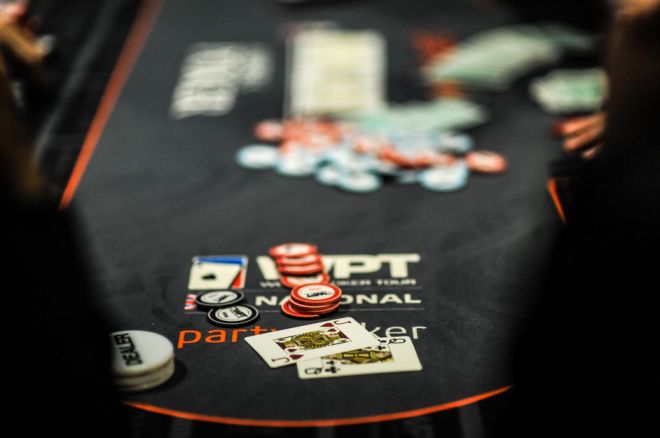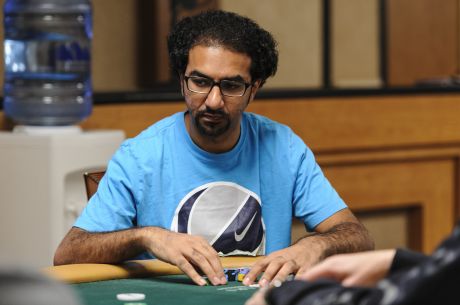Committing Chips With the Worst of It; or, A Lesson in Equity

Several years ago when I was still relatively new to poker, I made a post on a forum that I used to frequent where I moaned about continually getting my chips in as a favorite only to have my opponent suck out on me.
Some of the forum’s members told me that if I were getting my chips into the middle of the virtual felt with the best of it often enough, I would win many more chips than I would lose in the long run. But one poster told me — and I remember his post word-for-word — “if you’re only getting your chips in good, then you’re doing it all wrong.”
I thought he’d lost the plot or was trolling me because, at the time, I lacked the understanding to comprehend the message he was conveying. Honestly, I dismissed the advice then and the subject didn’t really return to my thoughts until some time later after I had joined the PokerNews Live Reporting team.
While witnessing thousands upon thousands of live poker hands — some played by the very best in the business — I began to think about the game on a higher level. My education was furthered and accelerated by chatting with some of the top British pros who I befriended on the circuit, mostly on the European Poker Tour. It was one such player I saw make a play that brought the memory of that aforementioned forum post back to me most vividly.
While I may have forgotten the finer details of the hand, I recall how the player in question raised preflop from early position with Q♣10♣, a player in middle position three-bet, and the button called the reraise. The initial raiser then jammed all in for around 40 big blinds and was called by the three-bettor’s 7x7x. My friend won the flip and had a nice stack, and he went on to finish deep in the money.
On the break following that hand, I asked him why he made the play that he did. He explained that although some of it was player-specific, he felt the button was often going to fold to his four-bet and that the chips already in the pot compensated him for the times that the guy who three-bet looked him up with a stronger hand than his Q♣10♣.
Recently, I played a hand online that raised the eyebrows of a friend, but I stand by the call being an easy one — and for a similar reason to the one my queen-ten jamming friend had had.
An active player, who was sizing his opening raises quite large, opened from the cutoff and I three-bet from the button with A♦8♦. This player had folded to three-bets more than his fair share of times and seemed to play fit-or-fold poker once the flop was dealt, so I wasn’t too concerned about being called.
To my surprise, once the blinds ducked out of the way, the cutoff four-bet jammed all-in. My initial reaction was to fold, then I noticed that the stack sizes were such that I was getting around 3.5-to-1 to call, which I did. As it happens, I ran into aces and lost the hand, yet that is irrelevant because the call should make me money in the long run.
Why? Because if my opponent were only four-betting all in with a tight range of AxJx+ and 8x8x+, I have 30.55% equity in the hand and only need pot odds of around 2.3-to-1 for the call to be correct. In fact, the only hand I couldn’t profitably call against would be the exact hand that he had!
My biggest mistake was obviously not paying enough attention to my opponent’s stack size in the first place, because if I had I could have avoided this situation. But as played, I made the correct play by calling.
What I am getting at here is that you don’t always have to have a strong hand to make a big play or call, from which follows that if you’re playing correctly — or “doing it right” (as that poster wrote long ago) — you will, in fact, sometimes be getting your chips in behind.
Pay close attention to your opponents’ tendencies, always be aware of the stack sizes and pot odds being offered to you, and use all of this information to your advantage whenever you can. Use your fold equity and learn how much equity you need against a hand range in order to profitably call.
For help with the latter, the table below will help you:
| Odds | Equity needed to win |
|---|---|
| 1-1 | 50% |
| 1.1-to-1 | 47.6% |
| 1.2-to-1 | 45.5% |
| 1.3-to-1 | 43.5% |
| 1.4-to-1 | 41.7% |
| 1.5-to-1 | 40% |
| 1.6-to-1 | 38.5% |
| 1.7-to-1 | 37.0% |
| 1.8-to-1 | 35.7% |
| 1.9-to-1 | 34.5% |
| 2-to-1 | 33.3% |
| 2.1-to-1 | 32.3% |
| 2.2-to-1 | 31.2% |
| 2.3-to-1 | 30.3% |
| 2.4-to-1 | 29.4% |
| 2.5-to-1 | 28.6% |
| 3-to-1 | 25% |
| 4-to-1 | 20% |
| 5-to-1 | 16.7% |
Want to stay atop all the latest in the poker world? If so, make sure to get PokerNews updates on your social media outlets. Follow us on Twitter and find us on both Facebook and Google+!









